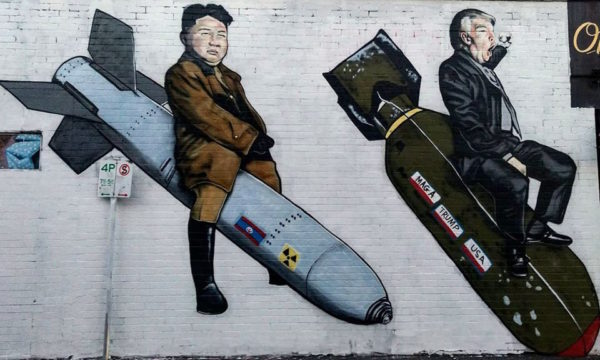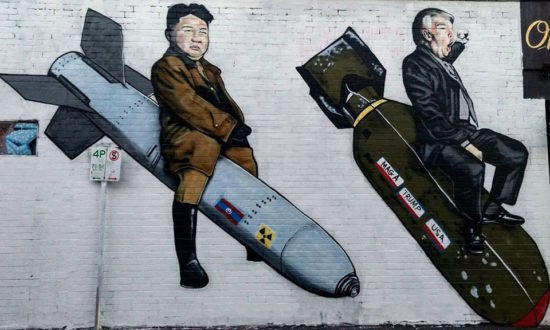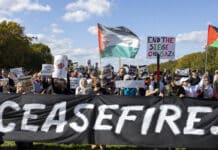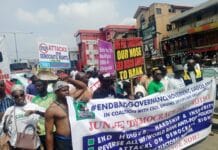Trump vs. Kim: Nuclear brinkmanship between two unstable regimes
Editorial from Offensiv, newspaper of CWI Sweden (Rättvisepartiet Socialisterna)
In the past week the already tense situation on the Korean Peninsula took a new dangerous turn. After the North Korean regime, according to its own claims, tested a hydrogen bomb on Sunday 3 September, South Korea has undertaken several military and naval exercises, and US Defence Secretary James ‘Mad Dog’ Mattis warned the US could launch a “massive military response that is both effective and overwhelming” against North Korea. Mattis added that the US has many options for the “annihilation” of North Korea.
US President Donald Trump has on numerous occasions threatened a military response while also criticising China as well as South Korea, a close US-ally, for seeking talks with the North Korea regime, which, according to Trump, “only understands one thing” (i.e. military power). In addition, Trump has threatened to impose sanctions on all countries that trade with North Korea, a threat that is primarily aimed at North Korea’s largest trading partner China.
US imperialism has in recent days promised to provide further assistance to South Korea and Japan with “sophisticated” weapons systems. In the current acute standoff it cannot be excluded the United States will include nuclear weapons in its plan for increased militarisation of South Korea.
Should the ongoing military and diplomatic brinkmanship be followed by the outbreak of war, this poses the threat of a nuclear exchange with catastrophic results. The threat of such a global disaster – the Korean Peninsula is home to more than 75 million people – is ultimately what is holding the contending forces in check.
But with its “fire and fury” soundbites and rejection of every proposal to explore the road of negotiations, the unpredictable and crisis-torn Trump administration risks being a prisoner of its own rhetoric.

North Korea’s peculiar dictatorship calculates that nuclear weapons represent a life insurance policy for the regime. It is an extremely risky and uncertain calculation that sets the stage for further nuclear and missile tests. The latest underground nuclear test, North Korea’s sixth and the fourth since Kim Jong-un came to power in 2012, was ten times more powerful than the US bomb dropped on Hiroshima, Japan, in 1945, according to US officials. The North Korean regime also claims to have succeeded in miniaturising a nuclear warhead, allowing it to be mounted on a long range Inter-Continental Ballistic Missile, thus dramatically raising its nuclear capabilities.
Using a combination of brutal repression and market economy reforms, the dictatorship in North Korea hopes to survive following almost three decades of economic collapse and isolation. Imperialist military threats and sanctions have played into the hands of the totalitarian regime. Like the rulers in other parts of the region, the tyrannical dictatorship fears an eruption of mass discontent, a fear shared by US imperialism.
War is a continuation of politics by other means. Trump’s war policy in Asia is a continuation of his racist, sexist and anti-labour policies at home, which have resulted in the largest mass protests in the US since the Vietnam War. Continued mass struggle in the US against Trump’s agenda is the best way to secure peace.
At the same time, socialists do not give any support to the dictatorship in North Korea, which threatens war and diverts a massive share of society’s scarce resources into armaments in order to keep the masses down and in the hope of gaining international recognition and acceptance by imperialism.
The threat of war remains as long as capitalism, militarism and imperialism have not been abolished. This threat can only be eliminated by mass struggle from workers, peasants and youth in both Koreas, and globally, for democratic socialism, peace and prosperity.




